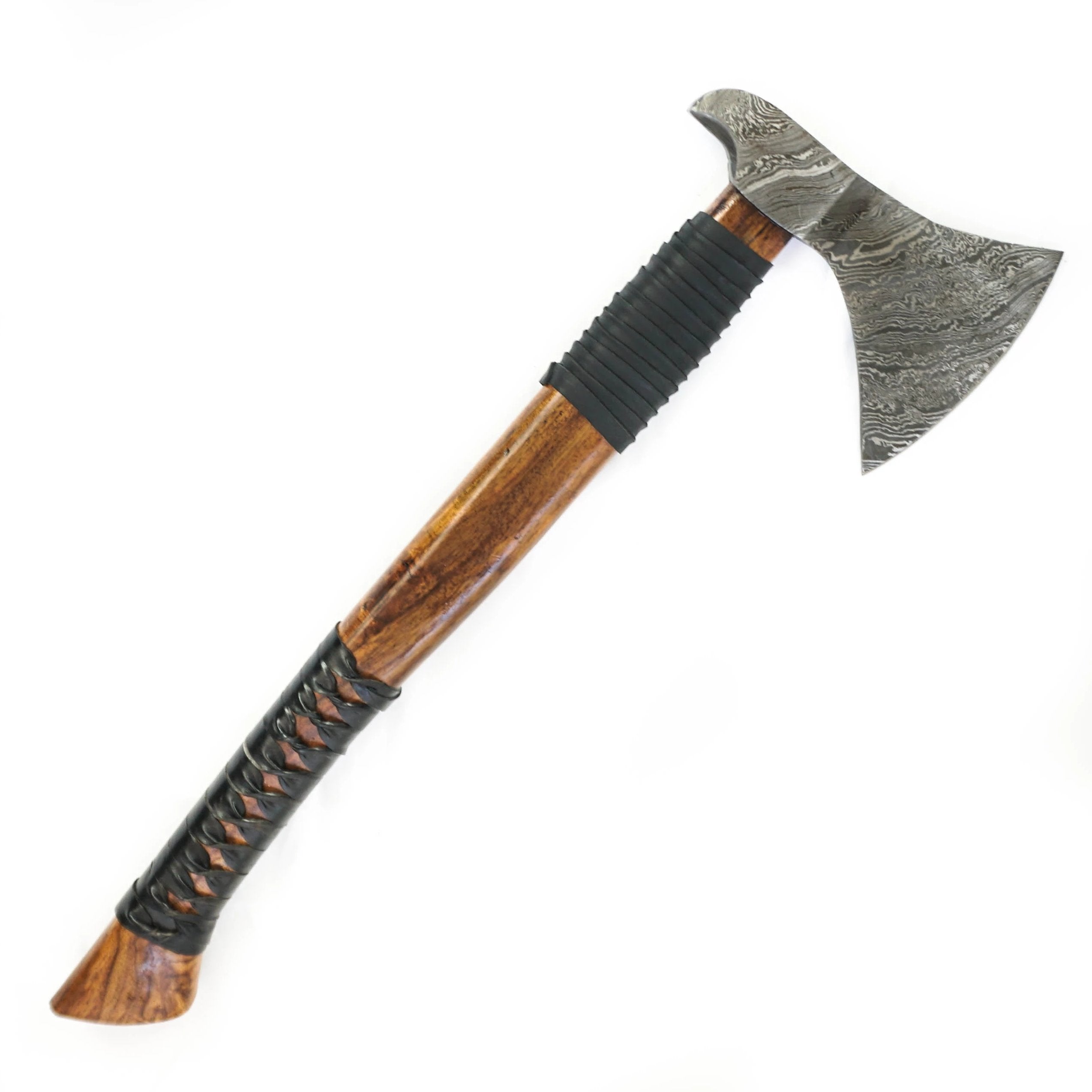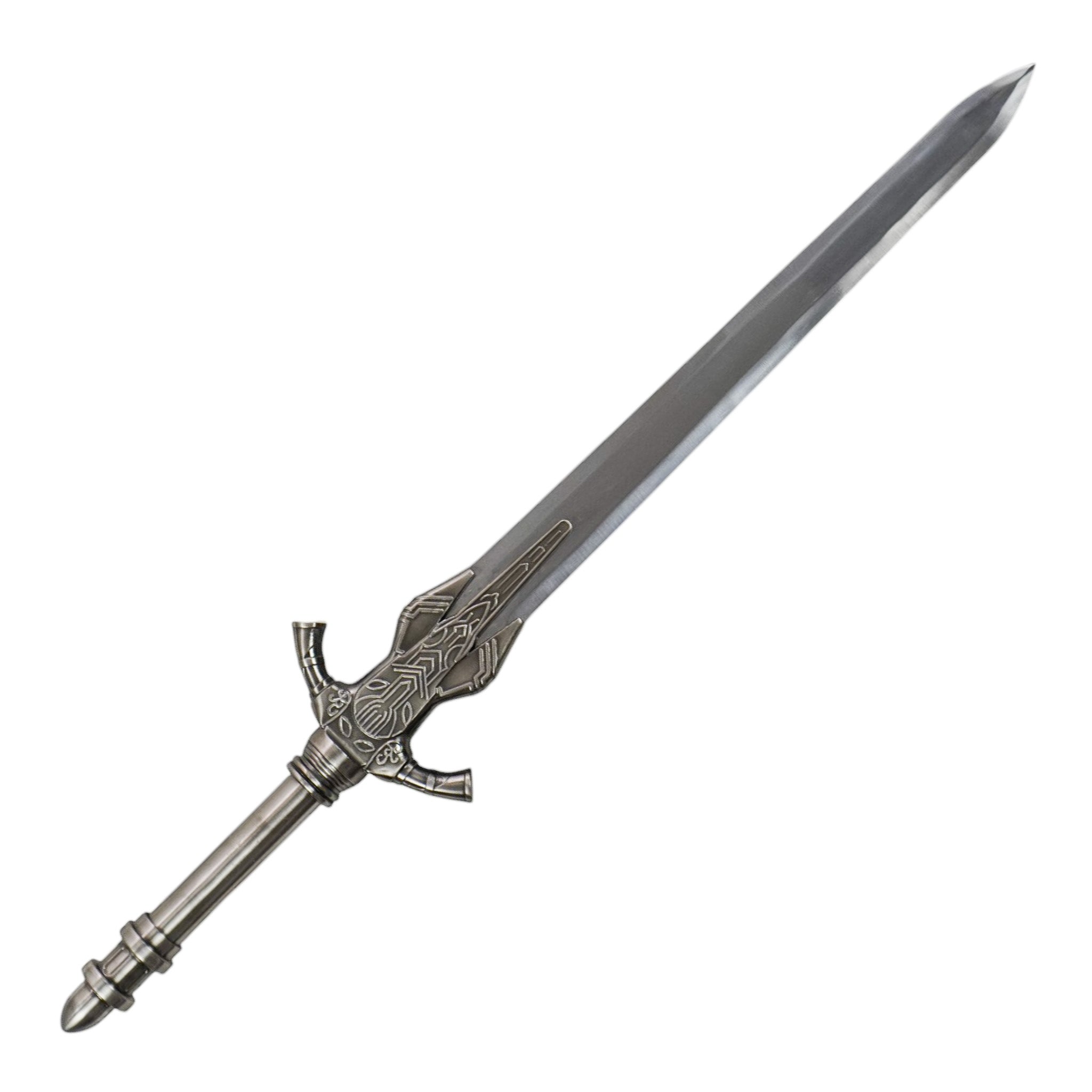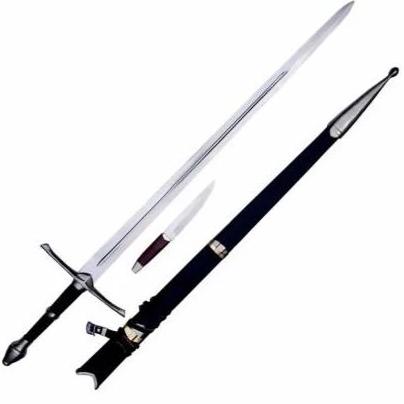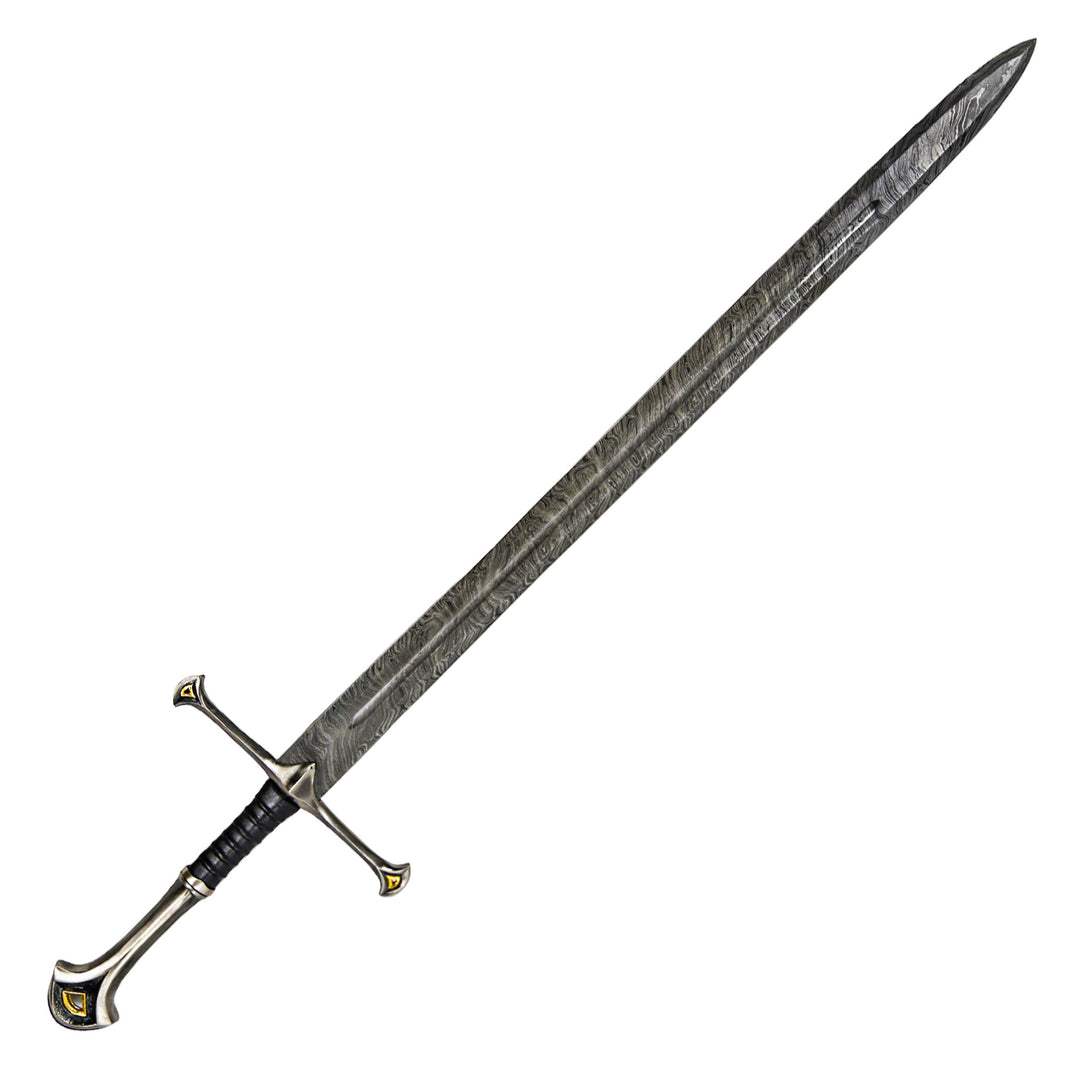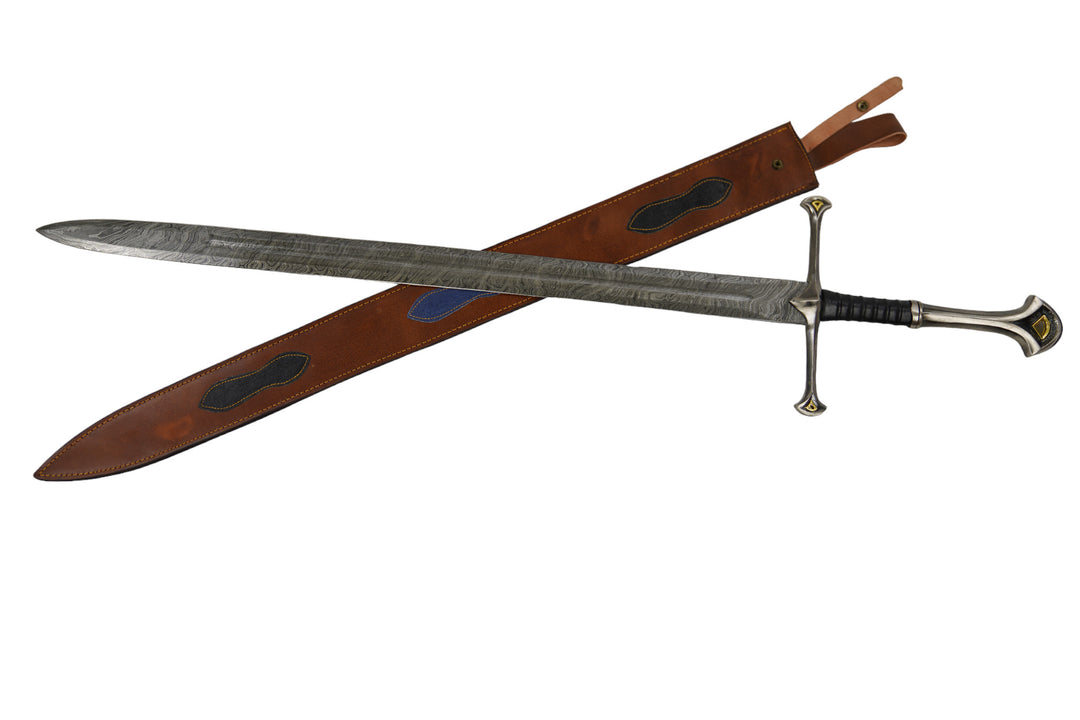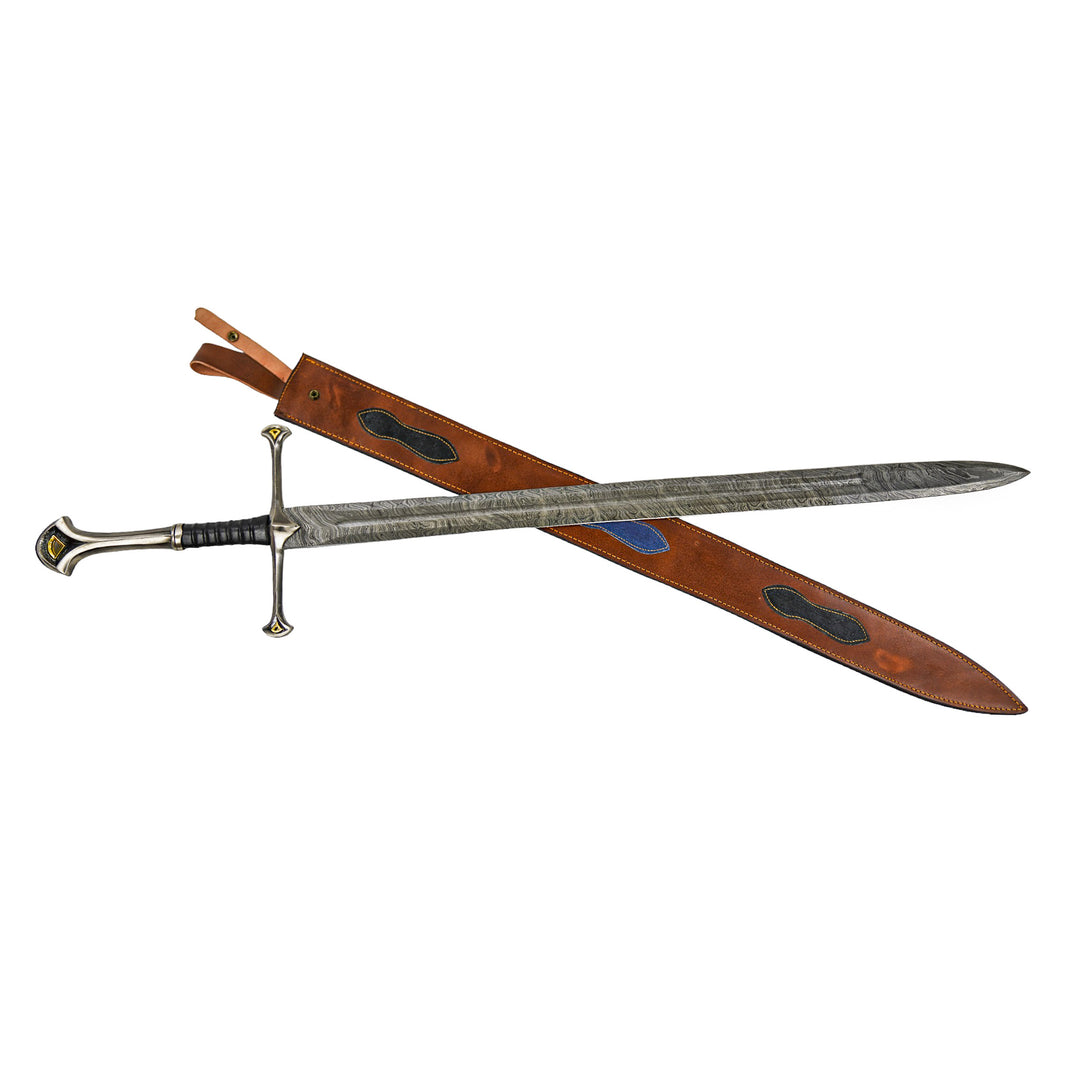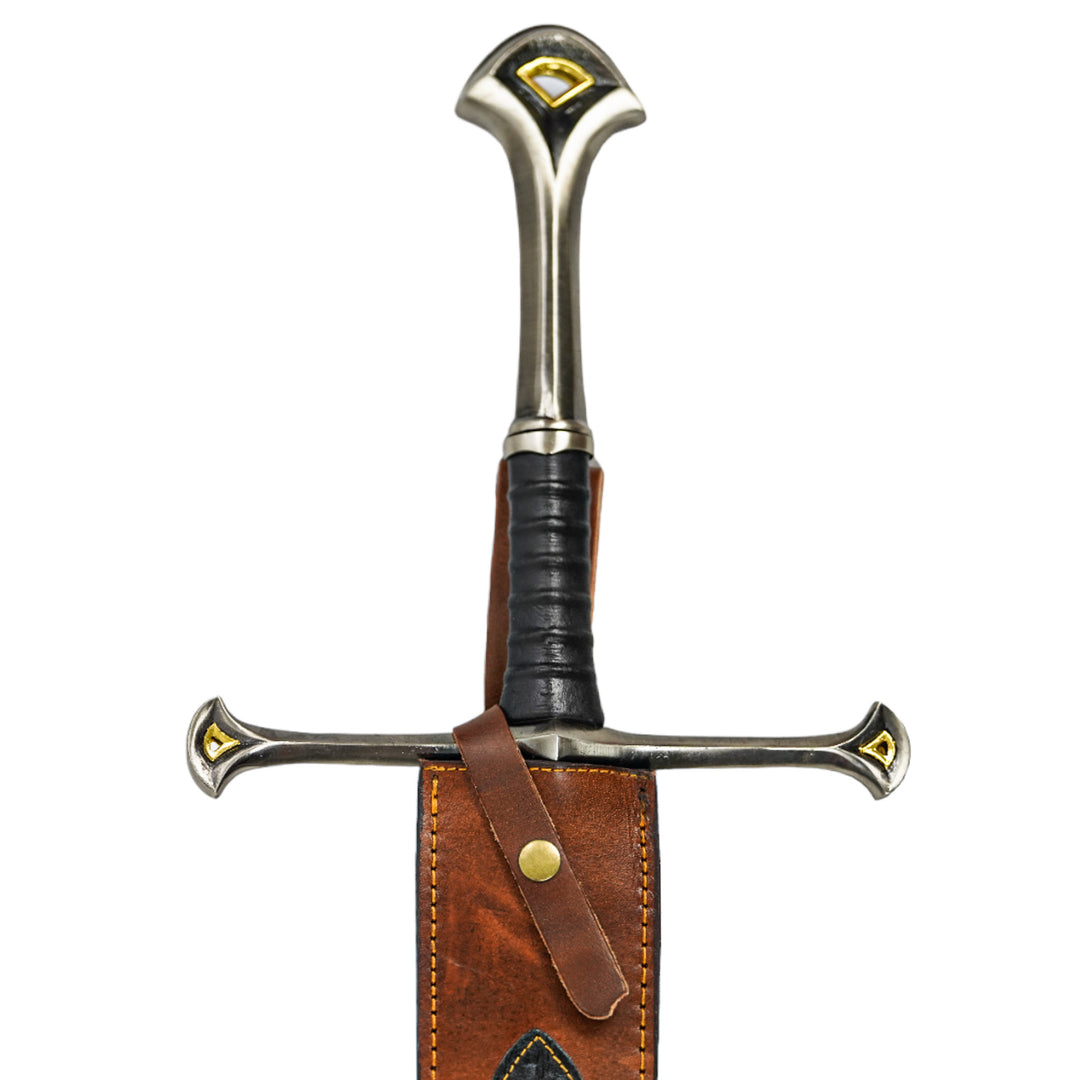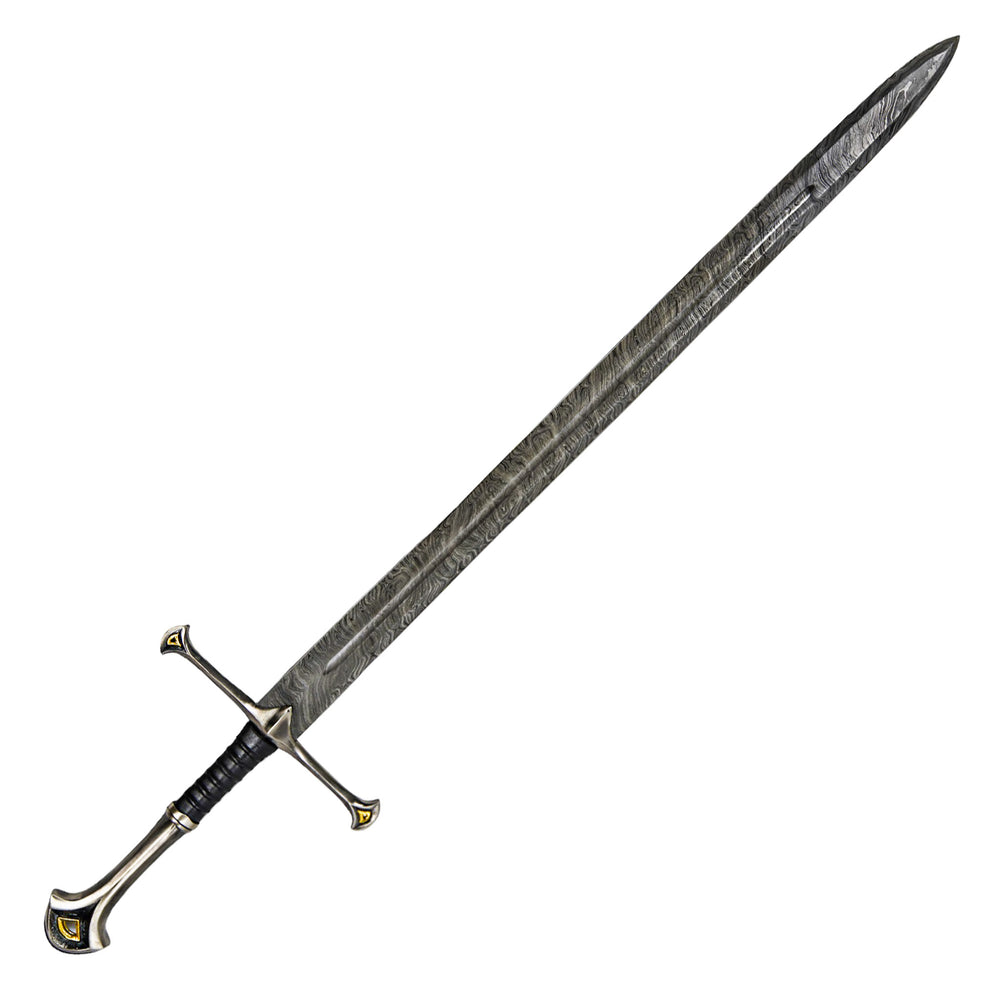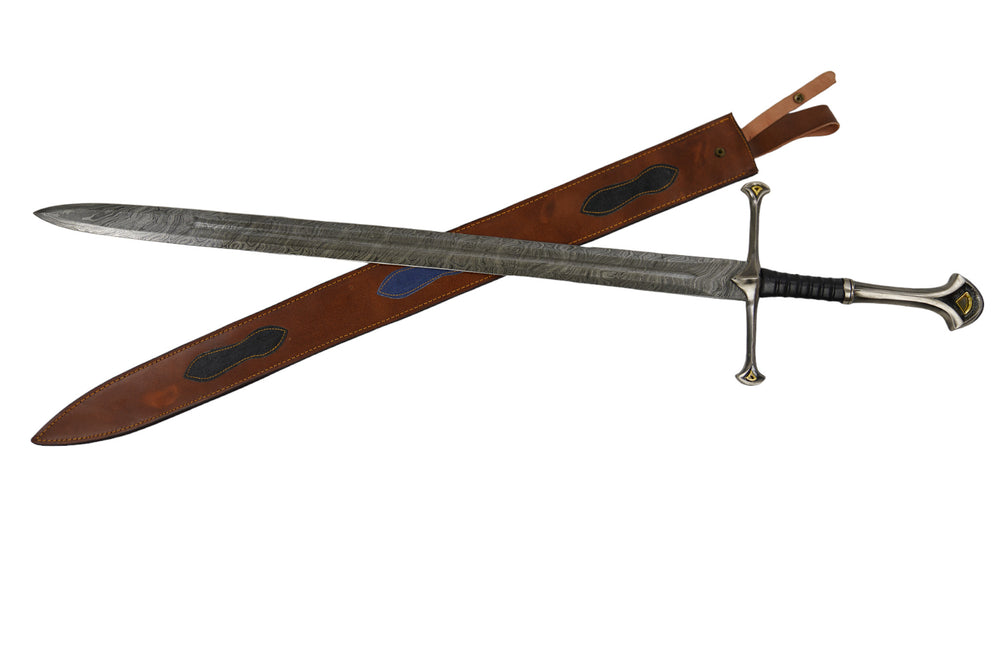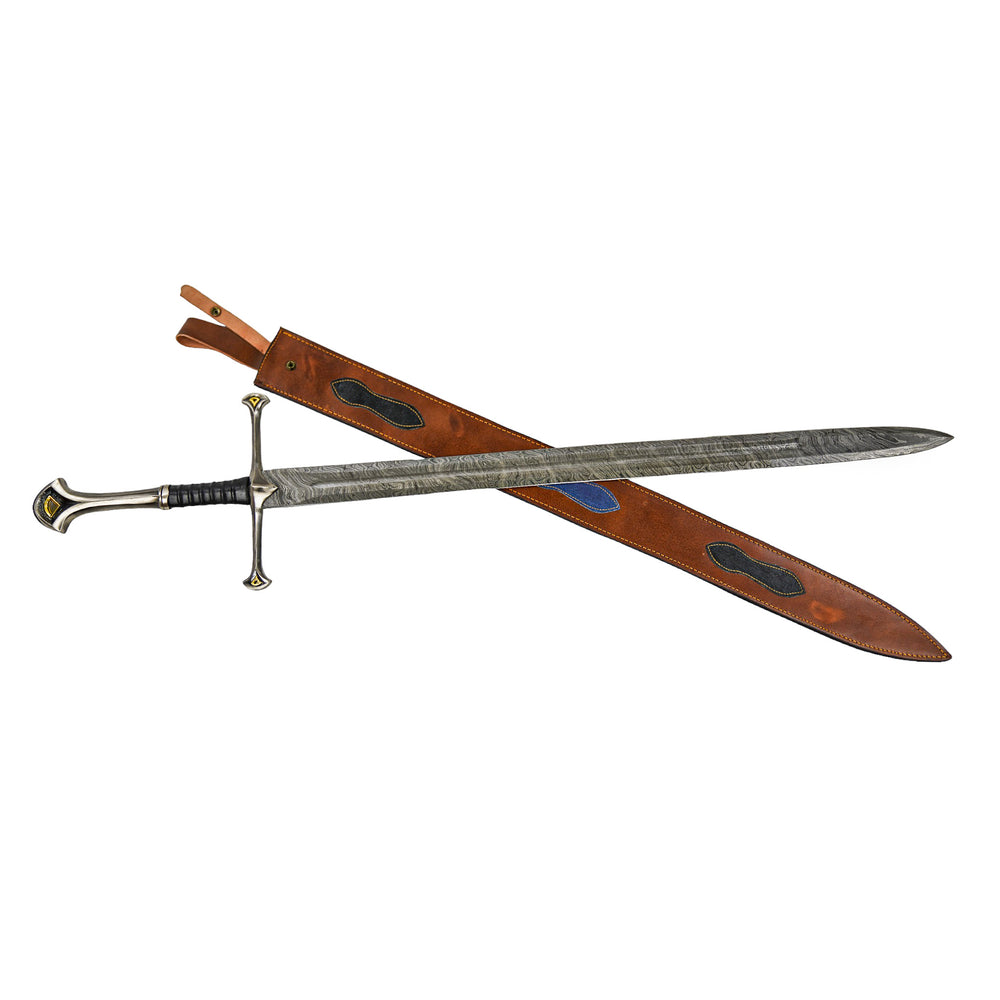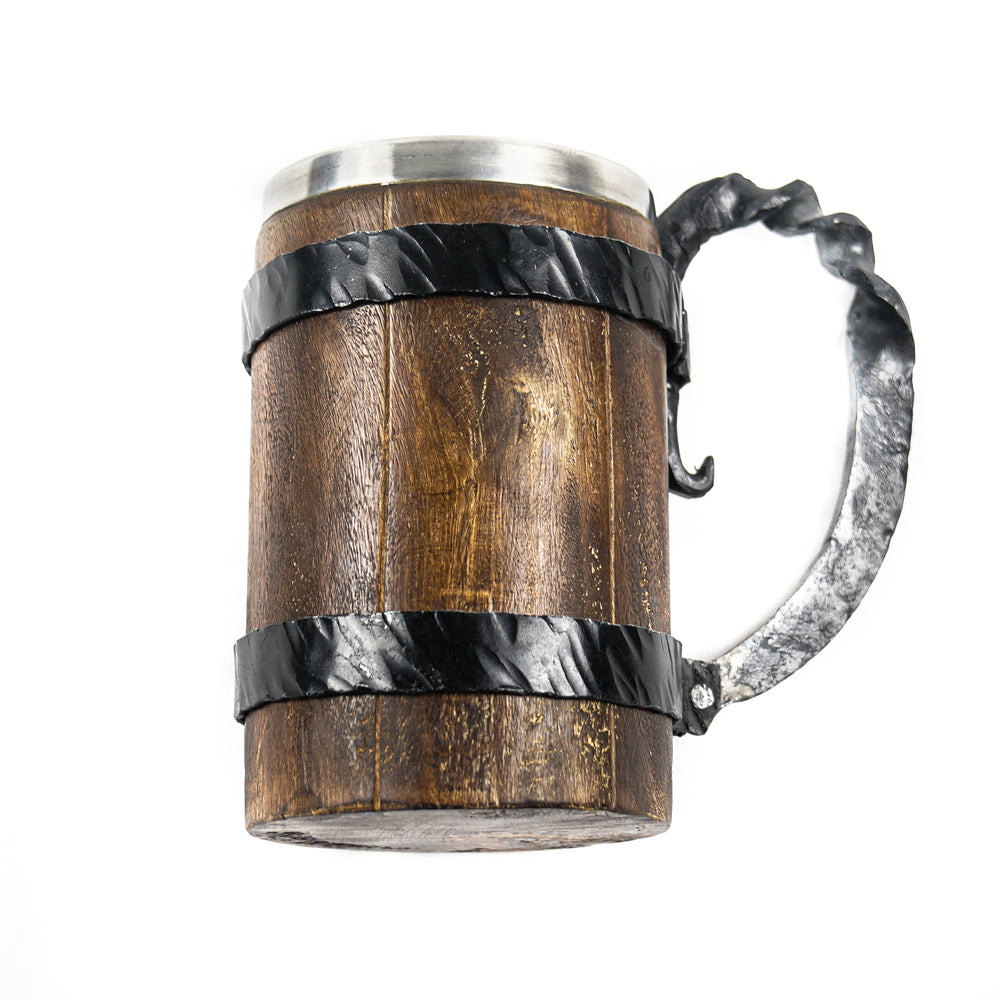Zweihänder Overview
Emerging from the 14th-century German longsword lineage, the Zweihänder was a favorite among German and Swiss mercenaries. Its evolution marked the zenith of the Middle Ages' trend towards ever-larger swords. This colossal blade echoed the designs of thrusting polearms like the Svärdstav, leading soldiers to adopt pike formations, traditionally reserved for polearm combat. Tipping the scales at over 4.5 pounds and stretching beyond 4.5 feet, the Zweihänder sometimes even reached a staggering ten pounds and seven feet, especially for ceremonial variations. Its sheer size necessitated it to be slung over the shoulder instead of being sheathed. Mastery in wielding it earned soldiers the coveted title "Meister des langen Schwertes" or "Master of the Long Sword." Although its popularity waned by the late 16th century, ceremonial use persisted into the 17th.
Blade Construction
Fashioned from Pattern welded Damascus steel, the Zweihänder boasts strength and elegance. This steel, an amalgamation of 11 steel pieces folded five times to 352 layers, marries the hardness of heat-treated carbon steel with durability. A Rockwell hardness rating of 55-56 HRC underscores its resilience. The blade's core integrates high carbon 1095 steel, celebrated for its unmatched carbon content. This fusion yields a sword, powerful in edge retention and robust enough to withstand formidable impacts — an epitome of sword craftsmanship. Adorned with a wooden handle and brass bolsters, it is complemented by a leather sheath.
Sword Specifics
- Handle: Metal and Leather
- Length: 48"
- Rockwell Hardness: 55-56 HRC
- Layer Count: 352
- Sheath: Crafted in Leather- Style may vary
- Blade Composition: Damascus Steel (6 segments of Carbon Steel #43 & #40, 5 segments of High Carbon Steel 1095)
- 1st Fold: 22 Layers
- 2nd Fold: 44 Layers
- 3rd Fold: 88 Layers
- 4th Fold: 176 Layers
- 5th Fold: 352 Layers
*Sheath style may vary

